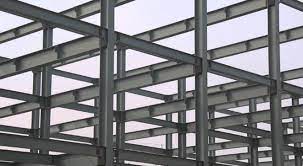The Evolution and Advantages of Steel Structures: A Testament to Modern Engineering

Introduction
In the realm of construction and engineering, few materials have played as pivotal a role as steel. Its versatility, strength, and durability have made it a cornerstone of modern architecture. This article explores the evolution and advantages of steel structure shedding light on why they continue to dominate the construction industry.
A Historical Perspective
Steel has a rich history that dates back to ancient times. The earliest known use of steel dates back to around 1800 BCE in Anatolia (modern-day Turkey), where craftsmen discovered how to produce a primitive form of steel called wrought iron. This marked the beginning of a journey towards perfecting this remarkable material.
The Industrial Revolution of the 18th and 19th centuries ushered in a new era for steel. The Bessemer process, developed in the mid-19th century, revolutionized steel production by allowing for mass production of high-quality steel at a lower cost. This breakthrough laid the foundation for the widespread adoption of steel in construction.
The Birth of Modern Steel Structures
With the advent of the skyscraper era in the late 19th and early 20th centuries, steel became the preferred material for building tall structures. Pioneering architects and engineers such as Louis Sullivan and Gustave Eiffel pushed the boundaries of what was possible with steel, giving rise to iconic landmarks like the Eiffel Tower.
The transition from wrought iron to steel brought about a quantum leap in structural integrity. Steel’s remarkable tensile strength allowed for the creation of soaring, gravity-defying structures, changing the skyline of cities around the world. Its malleability also enabled architects to experiment with innovative designs that were previously unattainable.
Advantages of Steel Structures
Strength and Durability: One of the primary advantages of steel structures is their exceptional strength-to-weight ratio. Steel is incredibly robust, capable of withstanding extreme forces, making it ideal for buildings, bridges, and other critical infrastructure.
Design Flexibility: Steel’s adaptability and malleability allow for intricate and innovative architectural designs. Its high strength allows for longer spans, providing architects with greater creative freedom.
Speed of Construction: Steel structures can be pre-fabricated off-site, allowing for quicker assembly on-site. This significantly reduces construction time, minimizing disruptions and saving costs.
Environmental Sustainability: Steel is highly recyclable, making it an eco-friendly choice for construction projects. The recycled content of steel is among the highest of any construction material, reducing the demand for new raw materials.
Resistance to Natural Disasters: Steel structures have proven to be highly resilient in the face of natural disasters such as earthquakes, hurricanes, and fires. Their flexibility allows them to absorb and distribute energy, minimizing damage.
Longevity and Low Maintenance: Steel structures have an impressive lifespan, often lasting for decades with minimal maintenance. This longevity translates to cost savings over the life of the structure.
Cost-Efficiency: While the initial cost of steel may be higher than some other construction materials, its long-term benefits outweigh the investment. Faster construction times and lower maintenance expenses contribute to its overall cost-effectiveness.
Conclusion
Steel structures stand as a testament to human ingenuity and the evolution of engineering. From humble beginnings in ancient times to the towering skyscrapers of today, steel has shaped the modern world in profound ways. Its unparalleled strength, design flexibility, and sustainability make it a cornerstone of the construction industry.
As we look towards the future, steel will continue to play a pivotal role in creating structures that push the boundaries of what is possible. With ongoing innovations in steel production and construction techniques, the legacy of this extraordinary material is destined to endure for generations to come.
